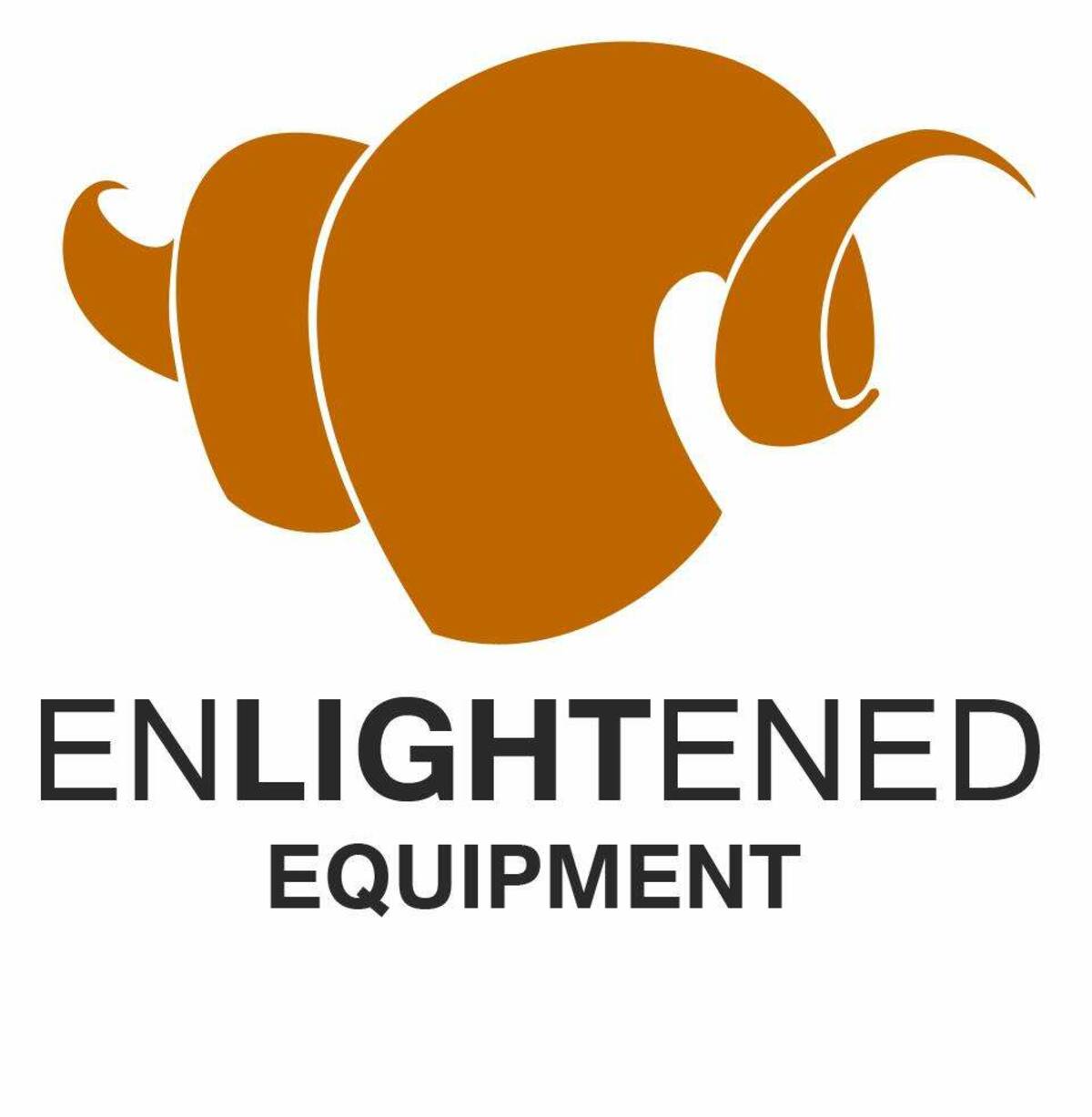Backpackers.com — The world of outdoor recreation is in a huge upswing. With new National Parks and Monuments and record numbers getting outside the summer of 2016 is shaping up to be one big adventure. One component of the rise of outdoor recreation is the advanced nature of gear today. The barrier to entry into the backcountry is less now than it has ever been. Yes, you still need to know how to start a fire, protect and prepare your food, and be physically fit, but gear is lighter, cheaper, and more beginner friendly than ever before.
The major brands are taking care of the masses, but the cottage gear industry has blown up right alongside the heavy hitters. For those unaware, brands like Marmot, Big Agnes, REI, and Patagonia are the “big dogs” of the outdoor gear world. Cottage gear is the term for the much smaller companies, theoretically working out of a cottage (which is actually a basement, in reality). These companies typically start with a single person, a sewing kit, and the uncomfortable memory of their most recent freezing expedition. Cottage gear is born from those who want unrivaled customization to fit their specific scenario, which the big manufacturers don’t often provide.
EnLIGHTened Equipment and the Cottage Gear Industry
Today there are hundreds of outdoor brands, some big, some incredibly small. One of our favorite cottage gear companies is EnLIGHTened Equipment (EE). EE is one of the premier manufacturers of backpacking quilts. Quilts are an ultralight replacement for sleeping bags, a hooded, confining and often heavy industry-standard that is slowly being revolutionized. EE is known for superior craft, an insane amount of customization (literally over 1 million combinations for a single quilt), and relatively low prices.
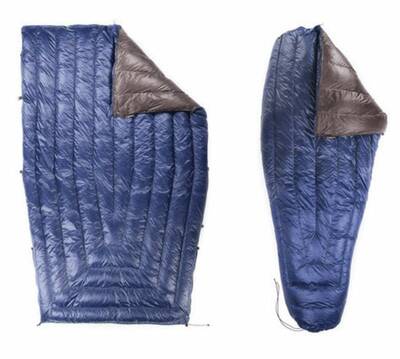
What some people don’t realize about cottage gear is that while it’s often more labor intensive to produce — due to the American-made component, the hand-sewn aspect, and the high-end materials — it doesn’t cost a ton more. In the case of EE, it often costs the same or less than the equivalent major brands. This is because there’s very little marketing involved, no retail markup, and no overhead. They build the quilts as they’re ordered, and there are enough orders to survive (and thrive, in some cases) as a company.
The cottage gear industry is undergoing a revolutionary boom, and EE is one of the better known companies out there. We got in touch with Peter Boysen, the Director of Communications of EnLIGHTened Equipment, to pick his brain on the cottage gear industry, EE’s future, and gear in general. The interview was conducted over email on April 29, 2016. Read below for the interview, and check out the black and white photos of the new EE shop.
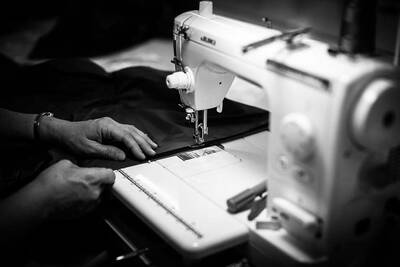
Interview with EnLIGHTened Equipment
Backpackers: Let’s talk about the cottage gear industry as a whole. EE began in 2006. What was cottage gear like then, and how has it changed over the years?
Peter: Most of the backpacking cottage gear industry owes itself to the books put out by Ray Jardine on lightweight backpacking. Besides pointing out the many workarounds that were and are available for saving weight even with existing gear, he had a very strong DIY ethic that he promoted pretty heavily that inspired many amateur gear makers. While most that tried some of his DIY approach just made something for themselves and went hiking, others very naturally tried to find ways to improve some of the function of the gear they were making, experimenting with lighter materials, and so on. The result then was a lot of new gear pushing new boundaries available to people who didn’t have the skills or time to make their own. Since then it has only grown, with people going from working out of their houses to opening up shops, and more.

Backpackers: Outdoor exploration has been on the rise in recent years. Would you say the same is true for the cottage gear industry?
Peter: Absolutely. While lightweight gear is still something of a niche, it has been and will continue to be a very rapidly expanding one. The popularity of the long trails (PCT, AT, etc.) have been exploding faster I think than anyone would even have imagined twenty years ago. As such, for section- and thru-hikers, who have the most need for gear that can shave weight and still work for days, weeks, and months on end, there is a market that’s rapidly expanding to try to accommodate that huge demand.
On top of all that, all those hikers also share their experiences with others on the trail, and that’s the best advertising anywhere. Somebody skipping down the trail with 10 pounds on their back is a pretty good motivator to see why your hiking seems like such a chore. When they find out that they can get American-made gear on a similar or smaller budget than the big name equipment, it’s a slam dunk.
Backpackers: How does competition work within the cottage gear industry? Are you aware of product development and offerings by other manufacturers?
Peter: It’s a small market in the grand scheme of things, so most of the owners know of each other, and some have had a handful of conversations. While there is obviously competition between the different makers, one of the cool things about backpacking gear is that there’s quite a bit of room for personal preference. Some target specific uses (hammock sleeping, super lightweight for thru-hikers on well marked trails, expedition-style gear that’s a bit heavier but much tougher, etc.), others try to offer something that works for almost anything. Some are very invested in minimizing weight, others go for a really great price, and most try to hit their preferred balance of all those.
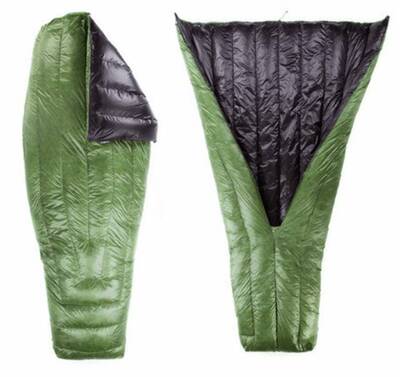
Every hiker is a little different, and with all the choices available there’s a really good chance they’ll be able to find a cottage gear company making equipment that checks all their boxes. I think everyone is probably aware of what’s being made at other companies, but in the end everyone is just trying to make something that meets their own needs better.
Backpackers: How about the competition of the cottage gear industry with more mainstream outdoor brands? Is there a push to merge the two at all, and where do you see EE in that field?
Peter: This is a question that I think will have a very different answer depending on each maker and what their priorities are. Only a few years ago EE was a couple people working in a basement, and a few more sewing out of their homes. Some makers never move past that. Some by choice, because they just want it to be a small shop, and they want their hands to be on each of the products they sell. Others are essentially forced to stay at that level, as there’s a lot of risk associated with hiring staff and moving into a shop.
EE, like a few others, is at something of a middle level. We have a decent number of staff, a nice big shop to fill, and still have orders coming in faster than we can make them. Continually scaling a business is extremely difficult for anyone, so some of the earlier cottage companies that had a lot of success have moved their production overseas in their attempt to keep up with it all.
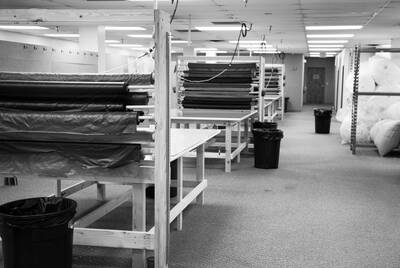
As to where this leaves the cottage companies competing with the mainstream brands, that too depends on the scale. The little in-house shops will basically never be noticed by any of the huge companies, and even if one of the major brands copied their product completely and offered it at a somewhat lower price, the little shops probably won’t be hurt too much since so much of their business is personal. When you’re getting 5-10 orders per day it’s much easier to build an ongoing relationship with a customer, which is always going to run stronger than a little change in a price tag.
Even if you combined all the medium-sized makers for backpacking gear, we’re probably still just a rounding error on a quarterly report for just one of the biggest brands, but those companies aren’t filled with people who are completely oblivious. If they see this kind of growth continue, most of those companies will find they have to work a little harder to stay competitive, but for all their resources not everything is stacked in their favor. Cottage companies sell directly to customers so they save a pretty major percent of the cost by leaving out a retailer markup, and the cottage companies have the added benefit of primarily siphoning off smarter customers with a better understanding of their actual needs versus the marketing voodoo of a major brand. The result is being able to stick to products with fewer gimmicks and better real-world performance.
Backpackers: Rumors and Reddit postings seem to say that EE is growing pretty seriously, has a new workshop (pictured here), and is straining under high demand. Can you speak to this?
Peter: It’s true, we’re growing extremely fast. About 9 months ago we had filled every seat we could for production in our old shop, but delays kept us from moving into our new shop until only March of this year. As a result, we’re way behind the curve in staffing, but customers keep ordering faster than ever, so our lead times have kept growing even as we’ve increased our staff as fast as we can train new people. More and more people are switching to quilts, love them, and tell all their friends about them. One really happy customer can convince a lot of folks to try a quilt, and we have a lot of happy customers.
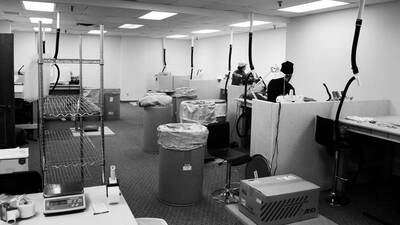
Backpackers: Will EE reach a point (or do you want to reach a point) where you make standard quilts for general purpose, instead of custom quilts per order?
Peter: Yes, we’ve tried a number of times to get quilts to keep in stock in our most popular sizes and temperature ratings, but in each case they’ve sold out extremely quickly, and we haven’t been able to produce more quickly enough. It’s a treadmill that’s moving much faster than we can run. People want our quilts badly enough that they’ll wait 3 months to get it, so think about how many people want to buy a quilt that they’ll get just in time for the trip they have coming up in a week or two when they’re sick of the sleeping bag they’re currently using being too constricting or even not warm enough. The only way to get and keep quilts in stock is to get ahead of the curve on production, but that takes time.
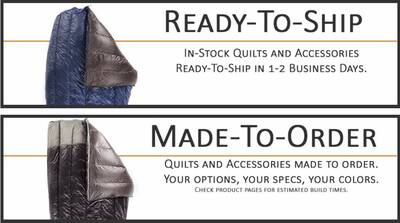
Backpackers: What sets EE apart from other quilt manufacturers in the market?
Peter: The first difference people notice is the huge number of choices we have, and it’s one of the reasons that my previous answer doesn’t suggest we want to replace our custom quilts with standard models. It should go without saying, but the quilt you’re going to like the most is the quilt that fits you the best, and that’s true for size, warmth, weight, budget, and even color! The Revelation quilt, our best seller, has well over a million possible unique combinations, but even if you leave out all the fabric options it’s almost a thousand. If you’re 7-feet tall, built like a linebacker, love winter camping and need something that’s the among the lightest possible quilts out there, we have a quilt exactly for you. On the other end of the scale [are] little kids, like my three-year-old son. He has a Protege that’s made just for him. If you want to spend time outdoors, finding a way to stay warm while you sleep should never be something that holds you back.

Another element we strive for in our quilt design is simplicity with versatility. It’s easy for companies to constantly try to reinvent the wheel, add loads of bells and whistles, which often make a product heavier and more fidgety, but not necessarily more pleasant to use or even more functional.
We of course still try to update our products and improve whatever we can, but it’s still critical to us that your equipment be something that allows you to spend time outdoors without the equipment becoming the focus. If you’re not thinking about your gear, it’s working correctly. If you throw it in your pack, it should disappear. If you pull it out and lay down to sleep, we really, really don’t want you to be up all night thinking about your quilt. Backpacking gear is a series of tools, not a goal in itself.
Backpackers: What are your (not EE’s!) favorite brands, cottage or mainstream, when it comes to gear? Since EE only makes quilts, you all must use a lot of other outdoor brands. I’m sure people would be curious what your team goes to for certain items like backpacks and tents.
Peter: Well, we’re also often using little prototypes or DIY versions of different items we have around the shop, but it’s still hard to pick favorites from the others since, like I mentioned before, the gear you use should be well suited to the trips you take, and each company has their own mix of priorities influenced by what they really want to key in on. To take an obvious difference, within the office we have a few folks who exclusively hammock camp, a few who sleep on the ground, and some who mix it up based on the trip. Most of the cottage gear companies out there are decent folk, so it’s really a matter of finding who best matches your philosophy for any given item, whether packs, shelters, jackets, whatever.
Backpackers: EE is thriving on a small product line: Revelation, Enigma, Prodigy, Accomplice, Revolt, Prospect. Are there different types of quilts in the works, based on customer demand? Do you plan to branch out into other fields of gear?
Peter: We definitely have some R&D projects in the works to expand beyond quilts, but it’s too soon to talk about anything specifically.

Backpackers: How does EE grow in its market today, beyond word of mouth?
Peter: Word of mouth is really the main thing, though it takes a few different forms. We’ve always had a strong presence in groups oriented towards lightweight backpacking, whether on the trail or in forums (like Backpackinglight and r/ultralight on Reddit), but over time that’s started to spread into a few other groups.
More recently a lot of bikepackers have found a lot to love. Great packability, low weight, and better comfort are all important for bikepackers. The same goes for backcountry hunters, which is a group really oriented around some very particular needs that are met very well by quilts. But honestly our biggest growth is probably still in the casual campers and backpackers, because for all the benefits of quilts, losing the feeling of being constricted and tangled up in a mummy bag is probably the most common praise we get from customers. It has nothing to do with super high performance or minimal weight, but it’s something that can benefit users at almost any level of spending time outdoors.
Backpackers: What quilts do you use?
Peter: I have one Revelation and one Enigma, a 20º and 40º. My 40º is my go-to cooler summer and milder shoulder season quilt, and the 20º for a colder shoulder season option. I love winter camping too though, so for those trips I just layer both quilts together, a process I actually wrote a blog about.
If you’re looking to get in on cottage gear, now is the time. There are countless manufacturers out there and as Peter says, the goal is finding the one that fits your specific needs. If you’re now convinced that a quilt is the way to go, head over to EE and customize your very own.
All images courtesy EnLIGHTened Equipment, All Rights Reserved
